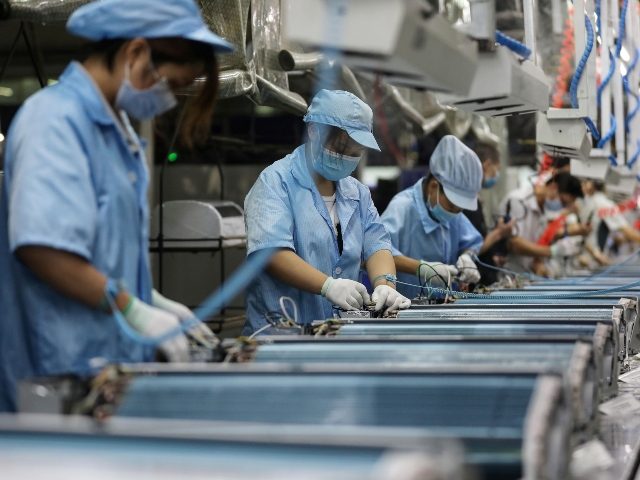Chinese state media is working hard to convince global customers that factories in Wuhan and its surrounding Hubei province are completely safe and returning to normal production levels.
The Global Times on Monday touted the resumption of normal operations at the Lenovo computer and phone factory located in Wuhan itself, ground zero of the coronavirus pandemic.
According to the Global Times, “work is back to normal” at the Lenovo plant, where over 100,000 mobile phones are produced daily. The latest product shipping from the Wuhan facility is the Motorola 5G Razr, a foldable smartphone styled after the once-dominant Razr flip phone that is compatible with next-generation 5G wireless networking.
“In the second quarter of the year, the Wuhan East Lake High-Tech Development Zone, known as the ‘Optics Valley of China’ and home to many big names including Foxconn, Lenovo, and China Star Optoelectronics Technology Co, has achieved a GDP growth of 13.5 percent year-on-year despite the virus onslaught. Since resuming production in April, increasing investment from both home and abroad, and top-down support from the whole country, has empowered Wuhan to restore its manufacturing capability and recover rapidly from the epidemic,” the Global Times wrote.
The article trumpeted international companies moving operations into the “Optics Valley” and opening subsidiaries there:
In March, US-based manufacturing giant Honeywell registered a wholly owned subsidiary, the Huosheng Industrial Technology Co in Wuhan as its headquarters for the company’s mass-mid segment business in China. In early June, the first 200 employees of Chinese smartphone maker Xiaomi officially moved into its Wuhan headquarters. And on June 20, Mindray Medical International Co, the country’s largest medical manufacturer, invested 4.5 billion yuan ($658.43 million) in constructing a base in Wuhan, its second global base worldwide.
“A few months ago, Wuhan was the center of the epidemic storm, but now it has become the weather vane of China’s post-epidemic economic development,” Yang Yuanqing, chairman and CEO of Lenovo, said in Wuhan on Thursday.
According to local newspaper the Changjiang Daily, Wuhan’s economy in the second quarter has bounced back to the same level in the same period last year, a huge reversal from the first quarter, when its GDP declined 40.5 percent year-on-year.
The article concluded by suggesting the biggest problem that faces fully up-and-running Chinese industries is how to safely do business with countries still suffering from serious outbreaks of the Wuhan coronavirus. To that end, biotech companies in Hubei were said to be exporting large amounts of coronavirus testing equipment to the rest of the world.
Wuhan was unquestionably a major international industrial hub before the coronavirus outbreak, and the Chinese state is clearly hoping the large number of supply chains that still run through the city will help to mute international criticism of how Beijing handled the pandemic.
The city celebrated its emergence from lockdown in mid-August with a massive pool party and music festival, producing photos of thousands of people rubbing shoulders without wearing masks.
Wuhan airport officials said over the weekend that they expected international passenger traffic to return to normal soon, beginning with major Asian hubs. Local health officials say it has been almost a month since the last case of local coronavirus transmission was reported.
The news about resurgent Chinese industry comes amid growing concern about China’s use of forced labor in its factories, including imprisoned Uyghurs from Xinjiang province. The Trump administration announced on Monday that it will ban the import of products made with forced labor, including products from the concentration camps China describes as “vocational centers.” China has been accused of shipping forced labor from Xinjiang to factories in other parts of the country, including factors used by global brand names.

COMMENTS
Please let us know if you're having issues with commenting.